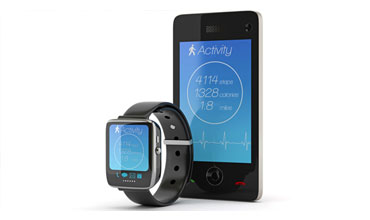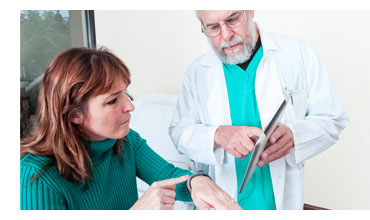BIOMEDevice BOSTON 2019 PANEL
How Sensor Technology Has Led Medtech to Real-World Success in Wearable Medical DevicesThe advent of digital health promises to transform healthcare as we know it. In fact, artificial intelligence and machine learning algorithms promise to decipher big data, delivering highly personalized therapeutics, which is heralded by many as a revolution more significant than anything witnessed in the history of medicine.1 While the veracity of this notion has yet to be proven, it’s safe to say that digital health and its budding technological frameworks will continue to advance and permeate the continuum of care at all levels.
I was recently invited to participate in a panel discussion on the center stage at BIOMEDevice Boston 2019. The session was moderated by Dr. Steven LeBoef, Ph.D., President and CoFounder for Valencell, and my fellow panelists included Teresa Prego, Senior Vice President of Marketing and Market Development for Global Kinetics, and Martin Peacock, Director for Zimmer and Peacock Ltd.
Steven led the discussion asking panelists to share thoughts about topics including how sensor technology is making an impact in healthcare.
Teresa had a unique perspective on this as Global Kinetics has developed a wrist-worn wearable that is optimized to detect and qualify the degree of movement disorders such as tremors in patients with conditions like Parkinson’s disease. This product enables physicians to adjust medications in order to optimize treatment and maximize the quality of life for these patients.
Martin had an equally interesting perspective as his firm, Zimmer and Peacock Ltd, manufactures electronic chemistry biosensors that are used in wearables to measure sweat, CGM, lactate, hydration, potassium, sodium, and pH. This capability is key to enabling wearable devices to contribute to the medical wellness and medical information ecosystem.
Steven shared that Valencell’s optical blood-pressure measurement sensors have become a key component in many wrist-worn sensors and that the high accuracy achieved by their technology is enabled by machine learning in combination with a high volume of data collected over many years.
My perspective on this included the observation that while sensors enable data capture and interpretation via an ever-expanding suite of traditional wrist-worn devices, there are many more applications that can make significant improvements to a patients’ quality of care. One example of this are systems that monitor patient care such as hand-washing stations in patient rooms that are designed with positive feedback mechanisms, such as digital counters to reinforce the number of caregivers who have washed their hands to keep from spreading germs. Another example might be to include disposable sensors in bedding to ensure that patients remain clean and dry or to add bedside sensors to track patient worn devices to safeguard that they are changed in a timely fashion.
Steven asked a number of other great questions, but one that resonated with me the most was one about our thoughts on regulatory hurdles that we have had to navigate in each of our businesses and any advice we could offer that may help members in our audience.
Steven shared that Valencell had originally developed their sensors for a consumer product market and that there was much learning and a great deal of documentation to create when they pivoted to serve the medical products market.
Teresa and Martin were more fortunate in that their products had been developed to serve the medical market from day one, while acknowledging that the road to clearance of a medical product always has some challenges.
I observed that the FDA has taken a fairly unique position with respect to mobile applications that connect to “wellness” products, some of which include both Class I and Class II products. The FDA issued a guidance document entitled Mobile Medical Applications - Guidance for Industry and Food and Drug Administration Staff. In Appendix B of this document, the FDA describes the types of products for which it will exercise “enforcement discretion,” and thus a 510k is not required for these applications. In contrast, Appendix C describes the types of products for which it will require a 510k application. As a result, this document has greatly demystified the landscape for developers of mobile applications for medical and wellness related products and it has provided relief to 510k applicants in the FDA pipeline by keeping app-enabled products, like those in Appendix B having low-levels of concern, out of the 510k pipeline.
I enjoyed the opportunity to share the stage with my fellow panelists and I thank Dr. Steven LeBoef for inviting me to participate with special thanks to Laurie Lehmann, Senior Conference Producer, for giving us all an opportunity to participate in this panel.
RELATED CONTENT
RELATED EXPERTISE
RELATED INSIGHTS
RELATED PROJECT WORK
RELATED CAPABILITIES
WANT TO LEARN MORE?
Start a conversation with Radius to learn how we can help you take your Healthcare project to the next level.


